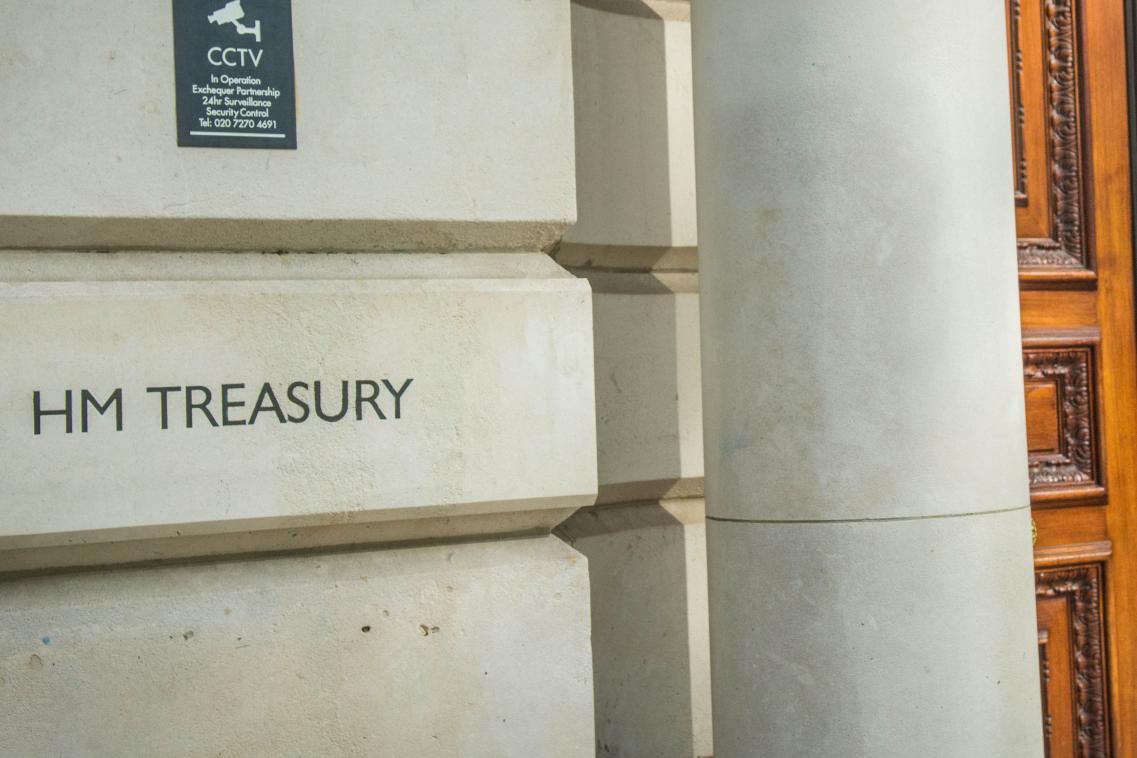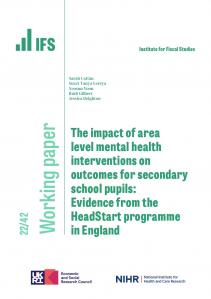Collection

After each Autumn Statement, Budget and Spending Review, we publish analysis of the Chancellor's proposals and reforms.
IFS Post-Spending Review Analysis
A joint Spending Review and Autumn Statement was delivered by the Chancellor of the Exchequer, George Osborne, on Wednesday 25 November.
The following day, IFS researchers presented their analysis of the newly announced spending allocations for government departments and look at what the Chancellor said on the public finances and the tax & benefit system.
The lunchtime briefing on Thursday 26th November was held in the Beveridge Hall, Senate House, London.
Presentations
- Gemma Tetlow, George the Builder: he can fix it
- David Phillips, Local government and the nations: a devolution revolution?
- Andrew Hood, Benefit and tax credit changes (Additional distributional analysis by James Browne and Andrew Hood.)
- Luke Sibieta, School funding reform
The IFS has published a set of background materials in the run up to the 2015 Spending Review
Outlook for the 2015 Spending Review
A background briefing note sets out the constraints facing the Chancellor, given the plans for the public finances that he published in the July Budget.
Executive summary
- The plans set out by the Chancellor in the July 2015 Budget imply that departmental spending is to be cut by £11.3 billion (3.2%) in real terms between 2015–16 and 2019–20. Within that, capital (investment) spending is planned to increase by £4.9 billion (11.5%) while resource (non-investment) spending is planned to be cut by £16.2 billion (5.1%).
- In the absence of further changes to the government’s planned level of total spending or forecasts for non-departmental spending, it will be cuts of this order that the upcoming Spending Review will allocate between departments.
- The government has already pledged to increase real-terms resource spending on the National Health Service, the Ministry of Defence and official development assistance and essentially to freeze real-terms resource spending on schools. Taken together, these pledges amount to around £7.6 billion by 2019–20. This means that other ‘unprotected’ departmental resource spending would need to be cut by £23.7 billion (18.8%) between 2015–16 and 2019–20. These departments also experienced significant cuts in recent years: the cut between 2010–11 and 2019–20 would be £64.9 billion (38.8%).
- After taking account of resources that will be devolved through block grants to Scotland, Wales and Northern Ireland through the possible operation of the Barnett formula, this would leave other Whitehall departments facing an average cut to their resource budgets of around 27% between 2015–16 and 2019–20. Over the period from 2010–11 to 2019–20, the total real cut to this resource spending would reach around 50%.
- In practice, some departments would be expected to fare better than this and others worse, depending on the government’s priorities. In response to a request from HM Treasury, departments have provided an assessment of the implications of cuts to their resource budgets of 25% and 40% between 2015–16 and 2019–20.
Autumn Statement 2015: the first test for the Chancellor's welfare cap
As George Osborne prepares for his combined Autumn Statement and Spending Review announcement, figures released on Friday 20 November by the Office for National Statistics suggest that he is on course to slightly overshoot the latest official forecast for borrowing this year of £69.5 billion.
An Observation article by IFS researchers explains that Mr Osborne faces two big challenges to meet his plan to cut borrowing and achieve a surplus by 2019–20.
The first is to divide up the shrinking budget for day-to-day spending by departments, while continuing to protect many areas of spending. The second is to remain within his welfare cap while taking on board the recent House of Lords motion that he must reconsider the tax credit cuts he announced in July.
It is possible the Autumn Statement may include new announcements on tax credits.
A recent IFS Briefing Note, prepared for the House of Commons Treasury Select Committee and published on 9 September, documents the estimated distributional impact of the tax and benefit changes that have been announced for implementation in the current parliament. It then considers the extent to which households might expect the net losses from these changes to be offset through increased wages as a result of the large increase in the minimum wage for those aged 25 and over that was announced in the July 2015 Budget. A press release on 9 September summarised the main findings.
Separately, the IFS published on 19 November a comprehensive analysis of the impact of the government’s current tax and benefit plans and the National Living Wage on household incomes and financial work incentives. An Observation article summarises the main findings of the full report. It finds that both the package of tax and benefit changes, and the new ‘National Living Wage’ will, on average, strengthen incentives to move into paid work and to work more if in work.
Public spending on the police was cut by 14% in real terms between 2010–11 and 2014–15. An Observation article, published on 17 November, placed these spending cuts in the context of the large spending increases over the 2000s. The new IFS research explored the differences between police forces in how they fared over these two periods.
An Observation article published on 21 October looked at spending on schools over this parliament.
It described how day-to-day spending on schools was protected from cuts in the last parliament and explained that the new Conservative government has announced protections for schools spending in this parliament too. However, rising costs mean that schools are likely to face real-terms cuts on spending per pupil for first time since the mid-1990s. Although the cuts are likely to be smaller than those seen across other areas of government spending, these will leave schools facing significant challenges over the next five years.

Summer Budget 2015
17 June 2015

Budget 2015
18 March 2015

IFS Green Budget 2015
The report analyses the issues and challenges facing Chancellor George Osborne as he prepares for his final Budget of this parliament.
4 February 2015
Collection details
- Publisher
- IFS
More from IFS
Understand this issue

Should we worry about government debt?
11 April 2024

Public investment: what you need to know
25 April 2024

The £600 billion problem awaiting the next government
25 April 2024
Policy analysis

Recent trends in and the outlook for health-related benefits
19 April 2024

4.2 million working-age people now claiming health-related benefits, could rise by 30% by the end of the decade
19 April 2024

Oil and gas make Scotland’s underlying public finances particularly volatile and uncertain
27 March 2024
Academic research

Do work search requirements work? Evidence from a UK reform targeting single parents
1 February 2023

The impact of area level mental health interventions on outcomes for secondary school pupils: Evidence from the HeadStart programme in England
13 October 2022

Prioritization, risk selection, and illness severity in a mixed health care system
16 June 2022